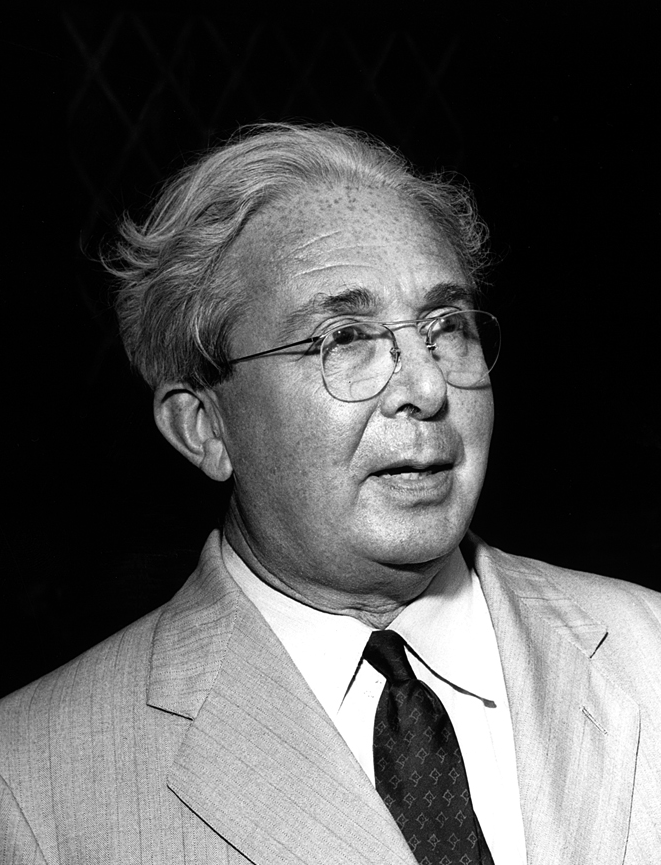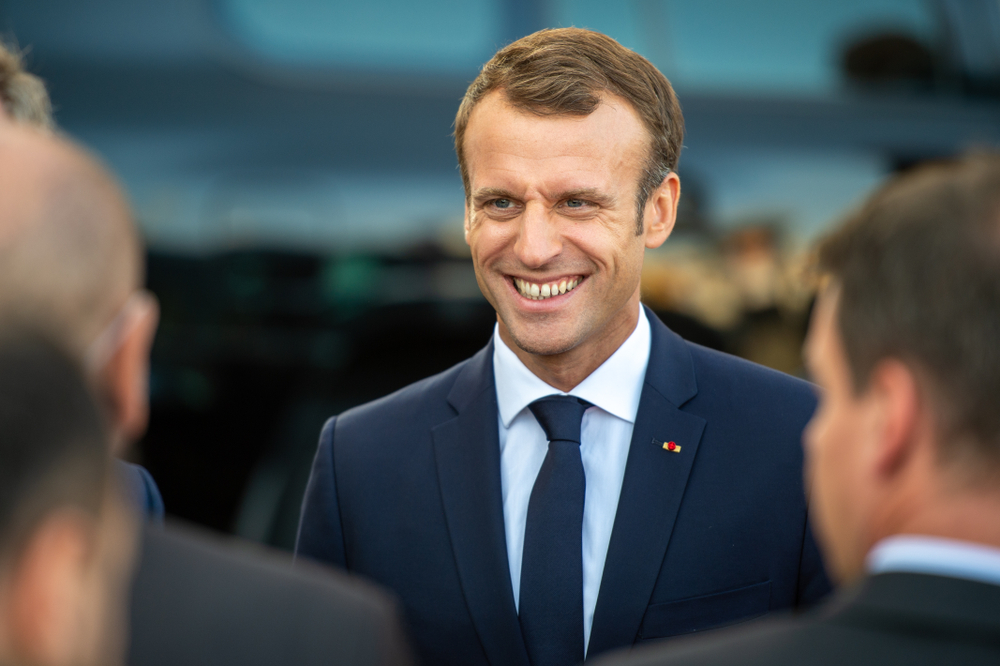
- Select a language for the TTS:
- UK English Female
- UK English Male
- US English Female
- US English Male
- Australian Female
- Australian Male
- Language selected: (auto detect) - EN
Play all audios:
“The Italian navigator has just landed in the new world.” This message did not herald the second coming of Christopher Columbus. Rather, it was a coded message to the American
administration. The physicists Enrico Fermi and Leo Szilard, working in the squash court of the University of Chicago, had managed to get the nuclear chain reaction going. As it stood on 2nd
of December 1942, there might have been a dozen (possibly several dozen) people in the world who knew what a nuclear chain reaction was. The man who first realised that such a thing could
be engineered was Leo Szilard, the greatest maverick in physics. Of his many remarkable talents, one was his ability to inspire irritation within a few minutes of starting to talk. He rarely
had a proper job, and instead had to be satisfied with occasional offers of temporary employment. This did not stop him from showering world-famous leaders of physics laboratories with
often unwelcome advice. He managed to annoy Lindemann in Oxford, Rutherford in Cambridge, Rabi in Chicago, Compton at MIT. Szilard got away with it because his advice was usually sound.
Szilard had followed the path of many a Hungarian who wanted to leave behind the authoritarian regime of Admiral Horthy: Weimar Germany in the 1920s, England and the United States in the
1930s and 40s. In 1934, despite the complete absence of evidence indicating that nuclear chain reactions could be possible, he patented the process. (I don’t know whether the US military
ever paid him anything for violating his patent.) So what is a chain reaction? We all became familiar with it quite recently during the covid pandemic: when one patient passes on their germs
to more than one person, a virus can spread very rapidly. A nuclear chain reaction is not very different. A particle called a neutron bumping into a uranium atom causes it to split in a
process called fission. This produces a Barium atom and a Krypton atom. This in itself is very interesting, but what is much more important is that beside Barium and Krypton atoms, every
incoming neutron generates the release of multiple neutrons from the uranium sample. Hence the number of neutrons can very rapidly increase, leading to an explosion. Most of us have heard of
the work of Alfred Nobel on dynamite, and have not found it too difficult to live with the resultant explosions. Why is a nuclear explosion so much more devastating? The reason is
Einstein’s innocent looking equation, E = mc2 (where E is energy, m is mass and c is the velocity of light). The efficiency of this process is enormous. If we can spare half a kilogram of
mass for this purpose, we can get enough energy to cover the total electricity consumption of the UK for a year. Is this science fiction? No. It’s just science, nothing to do with fiction.
So, to the crucial question: how does it come about? In the nuclear interaction central to fission, the total mass of the products is less than that of the reactants. That difference is
turned into energy. And how did it all start? Not by design! Fission was not on the agenda. Rather, by three scientists in 1938 examining the effect of neutron bombardment on various
elements. Hahn and Strassman were working in Berlin; (The third one of the team, Lise Meitner, being of Jewish origin, was not allowed to work there alongside them. She was by this time in
Sweden, having been smuggled out of Germany because she could not get a German passport either.) They noticed that when the element being bombarded was uranium, they got some unexpected
products. The results were explained by Lise Meitner and her nephew, Otto Frisch, and published in _Nature_ in February 1939. So was the whole world in uproar? Physicists were. In
particular, three Hungarian émigré physicists could not sleep. They turned things over in their minds. What to do? They had to do something. They felt an enormous weight on their shoulders.
They were Leo Szilard, Edward Teller and Eugene Wigner. They knew that the world was in danger. That the findings of Hahn and Strassman could be turned into a bomb. That such a bomb could
enable Nazi Germany to win the impending war. They felt they had to act, but realised that nobody would listen to three quarrelsome émigrés. They decided to write a letter to President
Roosevelt to highlight the danger, and to propose that the United States commence its own research immediately. They asked Albert Einstein, the world’s most prominent scientist to sign the
letter. He did not need much persuasion. He knew what the whole thing was about. Roosevelt read the letter in due course and acted upon it. He set up the Uranium Committee, and appointed
Lyman Briggs as its Chairman. Its first session took place on the 21st October 1939. The news coming from Europe at the time was dismal. Poland had fallen to the joint assault of Germany and
the Soviet Union. The meeting’s other attendees were Adamson, the representative of the Army, Hoover, the representative of the Navy, and the three Hungarian emigres. (Fermi refused to
attend. He did not want to be humiliated.) I will describe the meeting in a little more detail, to show that it was not operating with any spirit of urgency. Adamson viewed the exercise as
an attempt by some emigres to get money out of the American administration for their private research. He made this opinion known early in the proceedings: “Assessing the potential of new
weapons needs at least two wars. And wars are won not by weapons but by morale.” Wigner could not resist quipping that, in that case, the budget of the Armed Forces should be cut. Adamson
stopped the debate. He offered $6,000 to purchase graphite for the chain reaction experiments needed by Fermi and Szilard. The next impediment to progress was national security. Briggs and
Vannevar Bush, who were put in charge of the project, decided that the foreign-born scientists should be excluded from all the committees. Thus they lost the contributions of those with the
motivation to succeed and the ability to get things done. Overall not much happened in America in the next two years. It turned out that at this stage, the summer of 1941, British research
was in several respects more advanced than that of their colleagues across the pond. Peierls and Frisch, now working in Britain, found theoretically that the critical mass for the bomb to
explode would be between 5 and 10 kilograms, whilst other predictions were going into the tons. This finding had enormous significance in convincing the sceptics that the chances of success
were high. The research environment was dramatically altered in September 1942, when General Groves was appointed to lead the effort to make the bomb and Robert Oppenheimer was entrusted to
head the scientific research. This was a sea change. The laboratories scattered all over the US were centralised in Los Alamos. The loose collaboration between the various groups was
replaced by military discipline. Every member of the research team got a military rank. (Robert Oppenheimer became a Lieutenant-Colonel.) Military discipline was good for progress although
not everybody liked it. Szilard for one was an anti-disciplinarian. Not much love was lost between him and Groves. The General went as far as asking Stimson, the Minister of Defence, to have
Szilard interned as an enemy alien. The Minister said no. The research at Los Alamos focused upon the sole aim of making the bomb. Every avenue was explored. All theoretical calculations
were checked and rechecked. All experiments were checked and rechecked. Money was not a problem. Time was. The American bomb had to be ready before the German one that, as learned after the
war, did not even reach the stage of having a nuclear reaction going. Altogether the effort took about three years, cost 2 billion pre-inflationary dollars and employed over 100,000 people.
The bomb was ready to be tested by the spring of 1945, to be dropped upon a Japanese city. And here comes Leo Szilard, back into the picture again. The man who did his utmost to make the
quest for an atomic bomb a success, then turned against it. He argued that the US had a moral responsibility not to let the genie out of the bottle, not to cause mass destruction, not to
let a scientific experiment become a competition between nations to produce increasingly lethal nuclear weapons. He managed to contact Eleanor Roosevelt, the President’s highly influential
wife, who was sympathetic. She scheduled an appointment between Szilard and the President for the 8th May. Alas it could not go ahead. Roosevelt died on the 21st April. Would history have
been different if Roosevelt lived for another four months? Possibly. Szilard made one further attempt to prevent the bomb being dropped on Japan. In July, after the new weapon’s power was
successfully demonstrated at the experimental site at Alamogordo, he composed a petition to the new President (Harry Truman by this time), signed by a dozen scientists. This advocated
sending a warning to the Japanese: “Surrender, or we shall bomb you with our most powerful bomb.” The petition never reached the President. General Groves made sure of that. A MESSAGE FROM
THEARTICLE _We are the only publication that’s committed to covering every angle. We have an important contribution to make, one that’s needed now more than ever, and we need your help to
continue publishing throughout these hard economic times. So please, make a donation._

:max_bytes(150000):strip_icc():focal(319x0:321x2)/people_social_image-60e0c8af9eb14624a5b55f2c29dbe25b.png)




